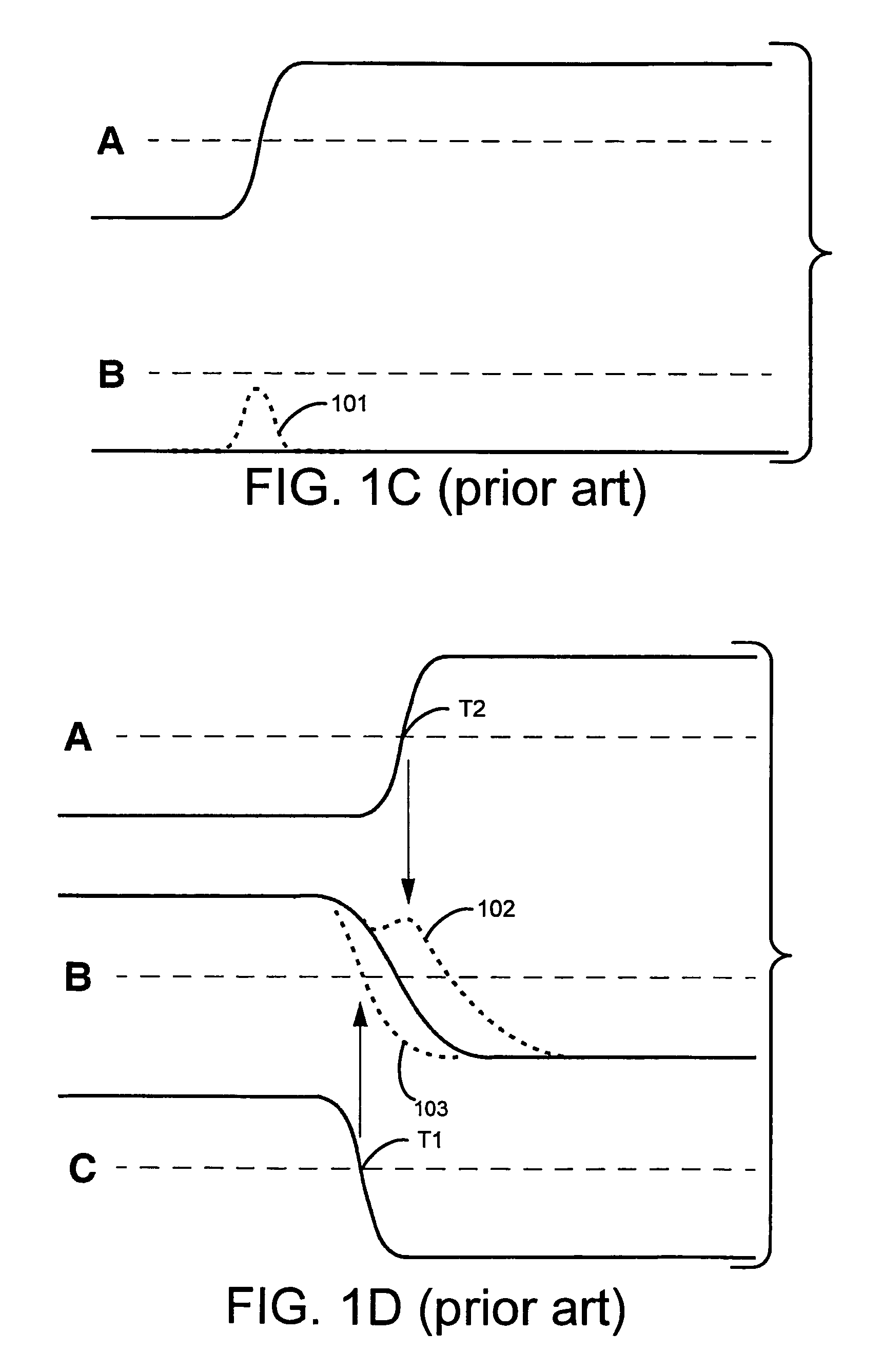Generation of engineering change order (ECO) constraints for use in selecting ECO repair techniques
a technology of engineering change order and constraints, applied in the direction of cad circuit design, program control, instruments, etc., can solve the problems of difficult correction of crosstalk induced violations using prior art methods known to inventors, and undesirable electrical interactions between paths
- Summary
- Abstract
- Description
- Claims
- Application Information
AI Technical Summary
Benefits of technology
Problems solved by technology
Method used
Image
Examples
Embodiment Construction
[0030]A computer 150 (FIG. 9A) is programmed in several illustrative embodiments of the invention to automatically perform static timing and / or noise analysis on an IC design in the form of a netlist, to estimate timing and / or noise behavior of a layout for the netlist obtained from a place and route operation (which places blocks of circuitry and routes wires therebetween), and to identify at least one violation by the behavior of a corresponding requirement thereon, such as setup time, hold time or bump height in a quiescent net.
[0031]Timing violations are typically identified (at the end of static timing analysis) as a list of endpoints of corresponding paths in the netlist. The computer 150 then identifies one or more victim nets that are located in a fanin cone of each endpoint in the list of timing violations, and also identifies a group of aggressor nets, wherein each aggressor net is capacitively coupled to one of the victim nets. Noise violations are typically identified (a...
PUM
 Login to View More
Login to View More Abstract
Description
Claims
Application Information
 Login to View More
Login to View More - R&D
- Intellectual Property
- Life Sciences
- Materials
- Tech Scout
- Unparalleled Data Quality
- Higher Quality Content
- 60% Fewer Hallucinations
Browse by: Latest US Patents, China's latest patents, Technical Efficacy Thesaurus, Application Domain, Technology Topic, Popular Technical Reports.
© 2025 PatSnap. All rights reserved.Legal|Privacy policy|Modern Slavery Act Transparency Statement|Sitemap|About US| Contact US: help@patsnap.com



